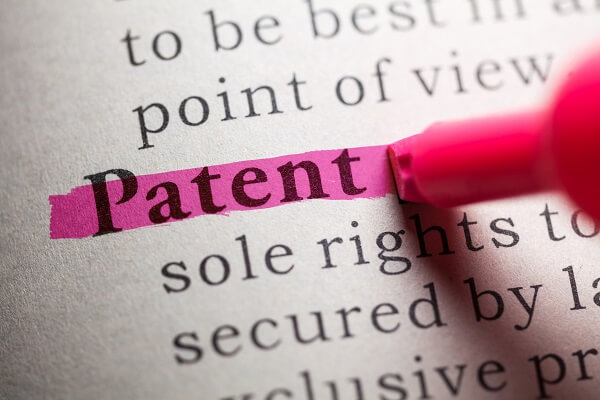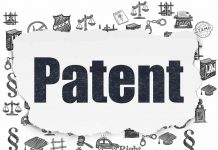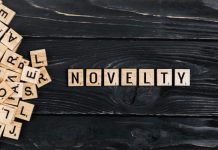This article is written by Sabaat Fatima, from HILSR, School of Law, Jamia Hamdard. This is an exhaustive article that will give you brief information about the set of general guidelines for the examination of the types of pharmaceutical patent claims.
Table of Contents
Introduction
The pharmaceutical sector is a significant user of the patent framework. Every year, new chemical elements are endorsed, and a significant number of patents are filed to secure variations of existing products, manufacturing methods, or second indications of known pharmaceutical products. Given the considerable impacts that patents can have on competition and, thus, costs of medicines, the measures that are applied to examine and allow pharmaceutical patents are highly important for general health policies. Policymakers in the health region and patent examiners ought to know that decisions relating to allowing a patent can directly influence the health and lives of the people of the nations.
The reason behind this article is to give a set of general guidelines for the appraisal of some of the types of pharmaceutical patent claims. The guidelines were deliberated to contribute to enhancing the transparency and efficacy of the patent system for pharmaceutical products so that countries could pay more vigilance to patent examination and granting procedures to curb the negative effects of non-inventive developments on access to medicines. These guidelines for patent examination pursued a way to manage the pharmaceutical product patent system and most importantly, to strengthen the patent system that has emerged from the TRIPS Agreement. It focuses on increasing the function of patent offices, public health, drug regulatory authorities, and civil society, to judge and take the obligatory actions, as appropriate under public laws, to secure public health in situations where patent applications cover a topic that does not deserve the merit of patent syndication. The guidelines, as suggested in this document, do not recommend the application of another requirement of patentability, but instead to consider, in applying the customary requirements of novelty, inventive step, and industrial applicability, explicit considerations related to development in pharmaceuticals.
Pharmaceutical patenting in India
When it comes to assessing the Indian pharmaceutical industry’s global prominence, the patenting of innovations in the Indian pharma field has always been in the limelight. Pharmaceutical products are allowed to get patents as per the Indian Patent Act, only after 2005 when India got into compliance with the TRIPS Agreement. The patents given to the pharma products from 2005-06 to 2009-10 have been especially listed on the website of the Indian Patent Office. Ever since the product patents were allowed, be it the granting of first compulsory license in product patent regime by the Patent Office, later upheld by the Intellectual Property Appellate Board (IPAB), the challenge of the constitutional validity of Section 3(d), first complete trial decision in patent violation suit by the High Court, or the interpretation of the criteria of patentability in terms of the therapeutic effectiveness of the Supreme Court, the Indian news has never been out to discuss on the pharma patent proceedings.
Pharmaceutical Policies and TRIPS Agreement
Public pharmaceutical policies have drawn on political viewpoints on trade agreements, public health, and access to essential medicines. Political viewpoints manage and guarantee the intelligibility of public projects to ensure access to medicines for the whole population. However, the execution of these policies at the public level is often hampered by tensions between the various entertainers: health, trade, industry. Political points of views on issues associated with the TRIPS Agreement, intellectual property rights, and access to medicines can be summed up as follows:
- Essential medicines are a public good.
- Access to essential medicines is a human right and, as a result, a public health priority.
- Patents should be managed properly, securing the interests of the patent holder and preserving the principles of public health,i.e., it is necessary to make proper use of the flexibilities and safeguards contained in the TRIPS Agreement. WHO has updated a guide for the development and implementation of national drug policies.
Examination of patent application
The patent applications are examined by the Indian Patent Office (IPO) as per the requirements mentioned under the Patent Act. The jurisdiction of the IPO is divided into four zones with an office in Delhi, Kolkata, Mumbai, and Chennai. The IPO published a ‘Manual of Patent Office Practice and Procedure’, to guide examiners and stakeholders on how an application will be dealt with by the Patent Office.
Following this, the patent office issued guidelines in specific technical fields to supplement the general manual:
- Guidelines for Examination of Biotechnology Application.
- Guidelines for Processing of Patent Applications relating to Traditional Knowledge and Biological Material.
- Guidelines for Examination of Computer Related Inventions, recently the Controller General of Patents, Designs and Trademarks was launched.
- Guidelines for Examination of Patent Applications in the field of Pharmaceuticals after substantial discussion with the stakeholders.
Patentability standards
Patents are given to those inventions which fulfill certain conditions called models of patentability. As per the Indian Patent Act, a patentable invention is characterized as a new item or process involving an inventive step and capable of industrial application. Therefore, coming up next are the fundamental necessities for any invention to be patentable.
Novelty
To be patentable the subject matter of the invention should not be known before the date of patent recording. The invention is considered new if not published in any document or utilized in the country or somewhere else in the world.
Inventive step
It is characterized as the component of an invention that includes specialized advancement when compared with existing knowledge or having economic importance or both, which makes the invention not obvious to an individual skilled in the art.
Industrial applicability
The invention should be capable of being equipped or used in industry. For example, a new and inventive method for eliminating tumour cells from a patient’s body is industrially not appropriate, hence can not be patented.
Overview of the guidelines
WHO developed the Guidelines for the Examination of Pharmaceutical Patents. This is a guide for the drafting of internal manuals of national intellectual property offices to examine the patent application of chemical-pharmaceutical inventions.
In the introduction to the guidelines, it is stated that the pharmaceutical industry is a crucial user of the patent system. While every year just a little and a diminishing number of new compound elements are endorsed, a great many requests are submitted to endure varieties of existing items, manufacturing processes, or when permitted, second indications for known pharmaceutical products. Given that patents grant restrictive rights for creating, dealing, and utilizing the patented material, they can be utilized to restrict competition and fix higher prices that would have existed with competitive products and generic medicines. Considering the hidden impacts that patents can have on competition and, as a result, on costs and access to medicines, the criteria used to analyze and grant pharmaceutical patents are significantly important for public health policies.
The motivation behind the guidelines for the examination of pharmaceutical patents is to provide a series of general guidelines for the examination of some common types of pharmaceutical patents that are allowed. They react to the developing concerns arising in various circles about the multiplication of patents that secure minor variations, and in some undeniable cases, current medicines and processes (for example, changes to drug formulations and salts, esters, ethers, isomers, polymorphs of existing molecules, and combinations of known drugs with other known drugs), while the quantity of new chemical elements for pharmaceutical usage is low and decreasing. While those patents may be powerless, or, whenever exposed to the strict investigation, invalid, by and large cases they can be utilized to forestall generic competition and, therefore, to reduce access to medicines.
While these guidelines perceive the significance of enduring pharmaceutical innovations in certain cases, they aim to boost the capacity of the patent offices, administrative experts for medicines and public health, and common society to survey and embrace vital measures as per public enactment, to secure public health in those instances in which patent demands and claims cover a material that does not justify the monopolistic prize that a patent rewards. The objective of the guidelines is to offer help to national patent offices and to attempt to contribute a rational analysis of pharmaceutical patents based on the rational implementation of patentability requirements.
The guidelines do not propose the execution of another condition for patentability; however, consider specific considerations related to innovation in pharmaceutical products when the basic requirements of novelty, inventive step, and industrial applicability are referred to.
History of the guidelines
As a novelty, inventive steps and industrial applicability are not defined under the TRIPS agreement. This leaves room for the country’s to operate; The agreement allows the most important flexibility i.e., patentability requirements to protect public health and access to medicines. Politicians and legislators have wide room for exercising to give legal effect to those flexibilities.
In 2005, the World Health Assembly in different resolutions had granted a command in different resolutions, for the examination of pharmaceutical patents, the WHO Essential Medicines Programme decided to develop draft guidelines from a public health point of view. The first working document was drafted by Professor Carlos Correa, after which a sequence of international, regional, and national consultations was started, the following of them are worth mentioning:
1) In October 2005, Thailand’s Food and Drug Administration and WHO organized consultations which included: authorities of drug controllers and offices of national patent of China, India, Malaysia, and Thailand, officers of schools of law, medicine, pharmacy and officers of the pharmaceutical industry in Thailand.
2) In June 2006, the experts of public health and patents from Australia, WHO, and the United Kingdom were requested to contribute comments.
3) In July 2006, a consultation took place in Buenos Aires, Argentina. This included patent officers, Ministries of Health, schools of law, and pharmacy from Argentina, Paraguay, and Brazil.
4) In September 2006, the consultation was held in Geneva. This included agents of the Swiss patent office, WHO, UNCTAD, ICTSD, the South Centre, the Lausanne Polytechnic School, WIPO, MSF, WTO, and Third World Network.
5) In December 2006, the draft guidelines were discussed and analyzed with 50 patent examiners from the national patent office of China.
6) In July 2007, the consultation was held in Panama. This included agents from Costa Rica, Colombia, Cuba, Nicaragua, El Salvador, Guatemala, Honduras, and Panama.
7) In October 2007, the consultation was held with the patent examiners from Egypt’s national intellectual property office.
8) In December 2007, there was a review and discussion with the Indian patent office along with the agents of Thailand and Indian NGOs working on this issue. This was held in New Delhi, India.
Apart from the consultations mentioned above, numerous comments were sent by Argentina, Brazil, Swiss, and Thailand to the Director-General of WHO and the WHO Essential Medicines Programme.
Content of the guidelines
The guidelines for the examination of patents in the field of pharmaceuticals discuss and analyze the most common claims as they include observations on practices in many countries and analyze 41 examples of different claims. For illustrative purposes, the recommendations for each type of claim are given below keeping in view public health perspectives that promote access to medicines.
Formulations and compositions
New formulations and compositions, as well as procedures for their composition, ought to by and large be considered clear in the light of the prior art, especially when a single active ingredient is guaranteed in association with known or unknown transporters or excipients. Exceptionally, this type of claims could be patentable if a genuinely unforeseen or astonishing impact is obtained, for example, when a truly troublesome issue or a long-standing need, like an observable decrease in side effects, is solved in a non-clear way, or when the solution is discovered to tremendous benefits contrasted to the state of the art.
Combinations
Combinations of known active ingredients ought to be considered non-inventive. However, a new and non-clear synergistic effect is viewed as a basis for patentability, ought to be suitably shown by biological tests and properly revealed in the patent specifications.
Dosage/dose
New dosages of known items for an equivalent or alternate indication do not compose inventions, especially (but not only) in nations where techniques of medical treatment are not patentable as such.
Salts, ethers, and esters
New salts, ethers, esters, and different structures (e.g. amides) of existing pharmaceutical items ought not to be considered patentable. This may not matter, particularly, when tests, aptly guided and depicted in the specifications, denote sudden advantages in properties for example a significant contrast ineffectiveness or side effects when compared with what was in the prior art. Processes for getting salts, ethers, esters, and other forms ought to be considered non-patentable.
Polymorphs
Polymorphism is a characteristic property of matter in its strong state. Polymorphs are not made yet found. Patent offices ought to know about the conceivable inappropriate expansion of the term of security emerging from the progressive patenting of the dynamic ingredient and its polymorphs, including hydrates/solvates. The procedure to acquire polymorphs might be patentable in some cases if they are novel and satisfy the inventive step guideline.
Markush claims
Claims covering a huge scope of compounds ought not to be permitted. Patent offices ought to by and large require patent candidates to give adequate information, for instance, fusion point, Infrared Absorption Spectrum (IR), or Nuclear Magnetic Resonance (NMR), acquired through obvious testing and experimentation to empower the reproduction by the revealed technique for every encapsulation of the invention for which assurance is looked for. Nonetheless, claims of restricted degree could be given if proof is provided that, with the replacement of any member inside a similar family class, a similar revealed result would be acquired. The inclusion of the patent should be limited to what exactly is empowered by the revelation in the specification.
Selection patents
Selection patents ought not to be allowed if the selected elements have effectively been revealed or claimed and, consequently, need novelty. If an existing item was considered patentable because of its surprising benefits under the applicable law, the patentability of a selection could be viewed as when an inventive step is obviously present.
Analogy processes
They are non-novel or plain pharmaceutical procedures, whether or not the starting materials, mediator, or the final product are novel or inventive, and ought to be considered not patentable.
Enantiomers
Single enantiomers ought to commonly not be considered patentable when a racemic blend was known. However, procedures for the obtention of enantiomers, if novel and inventive, might be patentable.
Active metabolites and prodrugs
Active metabolites of drugs derived from the active ingredient ought to commonly not be deemed patentable independently.
Patents over prodrugs, if acknowledged, ought to disclaim the active ingredient accordingly, if previously revealed or in any case non-patentable. They ought to possibly be allowed if the prodrug is explicitly depicted and a surprising, non-unsurprising, impact was found. Like other topics claimed in a patent, a prodrug ought to be adequately upheld by the data given in the particulars. Likewise, proof might be required that the prodrug is inactive or less active than the compound to be delivered, that the age of the dynamic compound guarantees a powerful level of the drug and that it limits the immediate metabolism of the prodrug just as the slow inertia of the drug.
Method of treatment
Methods of treatment, including counteraction, determination, or prophylaxis ought to be considered non-patentable where industrial applicability is needed as a condition for patentability.
Use claims, including second indications
Claims identifying with the utilization, including the second indication, of a realized pharmaceutical product can be declined, inter alia, on grounds of absence of novelty and industrial applicability.
This has been suspended by WHO for patent examiners, in probability on the grounds that many countries have officially embraced the guidelines, just like the case for Mercosur countries, or casually, similar to the case for Egypt, or the guidelines have motivated the advancement of their own guidelines, as on account of India, Ecuador, and a few others. As of now, the South Centre is proceeding to give this kind of help to the nations; mostly through workshops held in August 2014 in the four patent offices in India, in Mumbai, Chennai, Kolkata, and New Delhi.
The case of India
The then President of India gave his assent to amend the patent law on April 4th, 2005. This amendment enforced a law that brought India into consent with the TRIPS Agreement. Among the few developing countries, India, which is a member of WTO, had chosen a transition period of ten years(1995-2005), keeping in line with the TRIPS Agreement to delay the patent’s introduction for pharmaceutical products.
Novelty, inventive step and industrial applicability are not defined under the TRIPS Agreement leaving a margin for countries to define and interpret the meaning of these requirements as per their convenience. The Indian Patent Act lays down a series of arrangements that define the patentability requirements, as discussed below:
- “Inventive step” is defined as something that includes the advancement of technicality as compared to the present information or having financial significance, or both, and that makes the invention not clear to an individual skilled in the art.
- A provision is expected to frustrate the “evergreening” of patents, by not permitting the basic discoveries of the accompanying to be patentable: a new type of a known substance that does not improve the known adequacy of the substance; the simple revelation of a new property or new utilization of a known substance; or the simple utilization of a known interaction.
India is considered as the “Pharmacy of the Third World”, as India has had a law since 2005 which is considered as a model for other developing countries from a public health point of view. Unexpectedly, on 12 March 2012, the Indian Patent Office released a compulsory license to the local organization Natco Pharma for an anti-cancer medicine: “sorafenib tosylate” (trademark “Nexavar”) patented by Bayer, consequently making the possibility to acquire this product at a lower cost to expand access to people that need this medicine.
Following seven years of the case, the Swiss pharmaceutical colossus, Novartis, lost its case before the Supreme Court of India. In April 2013, the Supreme Court dismissed the patent application for an exorbitant anti-cancer product with the brand name Gleevec (or Glivec, depending on the country). Since 2006, Novartis has been fighting in various legitimate organizations in India to acquire a patent for Gleevec.
In 2006 and afterward, in 2009, India had dismissed the patent merely because it was not, as per the Indian Patent Act, identified as a new medicine, and was merely an amendment of a known atom. This medicine just did not meet one of the necessities for patentability, that of novelty. Discontent with the decision, Novartis took the case to the Supreme Court to challenge the section of Indian intellectual property law i.e., Section 3(d), a section that was completely consistent with the necessities of the TRIPS Agreement of WTO. With a specific measure of criticism, when the Indian law did not suit it, the Swiss company attempted to change the law.
When the case entered the Supreme Court to denounce the intellectual property law, it quit being a case of Glivec versus India and turned into a case of public health against the big pharmaceutical industry. India keeps on refusing to patent little changes (known as evergreening) and numerous nations follow this example to empower the low-asset populace to get the medicines. In more than 40 countries Novartis Glivec is patented, including the United States of America, Russia, and China.
The universal industry of India could proceed to manufacture and export this and numerous other medicines at costs at which individuals and health frameworks in many nations could access.
Conclusion
Hence, pharmaceutical patents have always been a delicate topic in India with the Indian generic industry being dynamic in opposing the innovator patent applications and the strict examination guidelines followed at the IPO. The issued guidelines are deliberate to bring more transparency on the practice and procedure in the pharmaceutical sector yet with the provision that in the case of any conflict between these Guidelines, Patents Act, 1970 and the Rules made thereunder, the provision of the Act and Rules will prevail.
References
- http://nopr.niscair.res.in/bitstream/123456789/30056/1/JIPR%2019%286%29%20428-430.pdf.
- https://www.who.int/docs/default-source/inaugural-who-partners-forum/rp61-guidelines-on-patentability-and-a2m-en.pdf?sfvrsn=ae5ca584_1&download=true.
- https://r.search.yahoo.com/_ylt=AwrxgKRemI9g8zQANYK7HAx.;_ylu=Y29sbwNzZzMEcG9zAzUEdnRpZAMEc2VjA3Ny/RV=2/RE=1620052191/RO=10/RU=https%3a%2f%2fwww.undp.org%2fcontent%2fundp%2fen%2fhome%2flibrarypage%2fhiv-aids%2fguidelines-for-the-examination-of-patent-applications-relating-t.html/RK=2/RS=Z2_rRH3yf_PNBPmdALzZtfoVS6k-.
- https://www.wipo.int/edocs/lexdocs/laws/en/in/in053en.pdf.
- https://www.wto.org/english/tratop_e/trips_e/intel2_e.htm.
- https://www.wto.org/english/tratop_e/trips_e/intel1_e.htm.
- https://www.who.int/.
- https://www.undp.org/publications/international-guidelines-human-rights-and-drug-policy.
- https://ipindia.gov.in/achievements-page.htm.
- https://ictsd.iisd.org/.
- https://www.southcentre.int/.
- https://www.msf.org/.
- https://www.wto.org/.
- https://www.twn.my/.
LawSikho has created a telegram group for exchanging legal knowledge, referrals, and various opportunities. You can click on this link and join:
 Serato DJ Crack 2025Serato DJ PRO Crack
Serato DJ Crack 2025Serato DJ PRO Crack











 Allow notifications
Allow notifications



